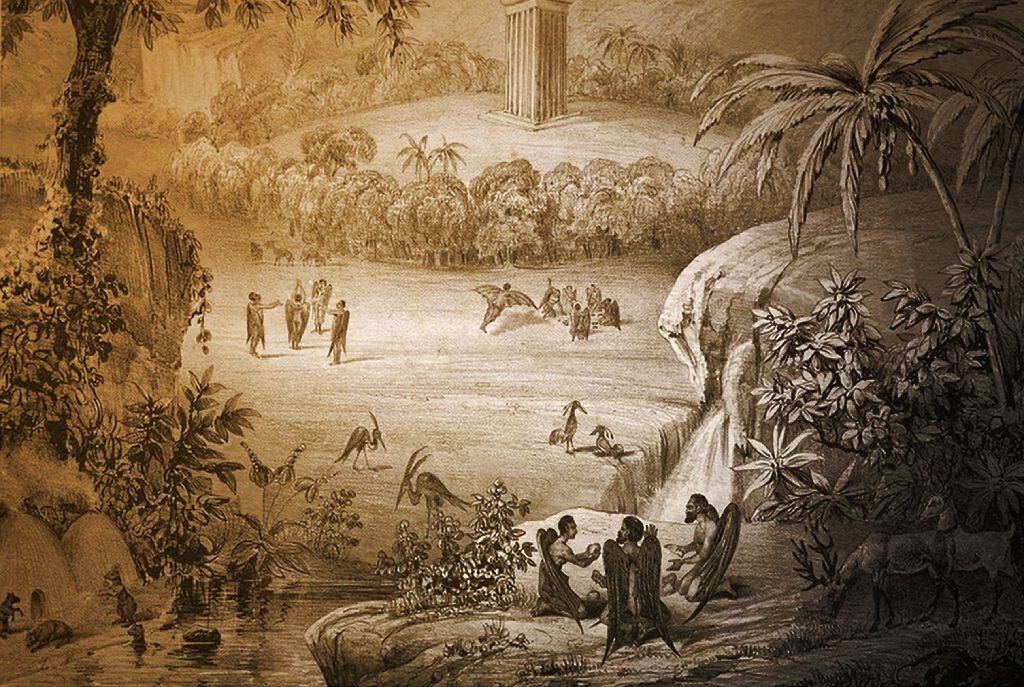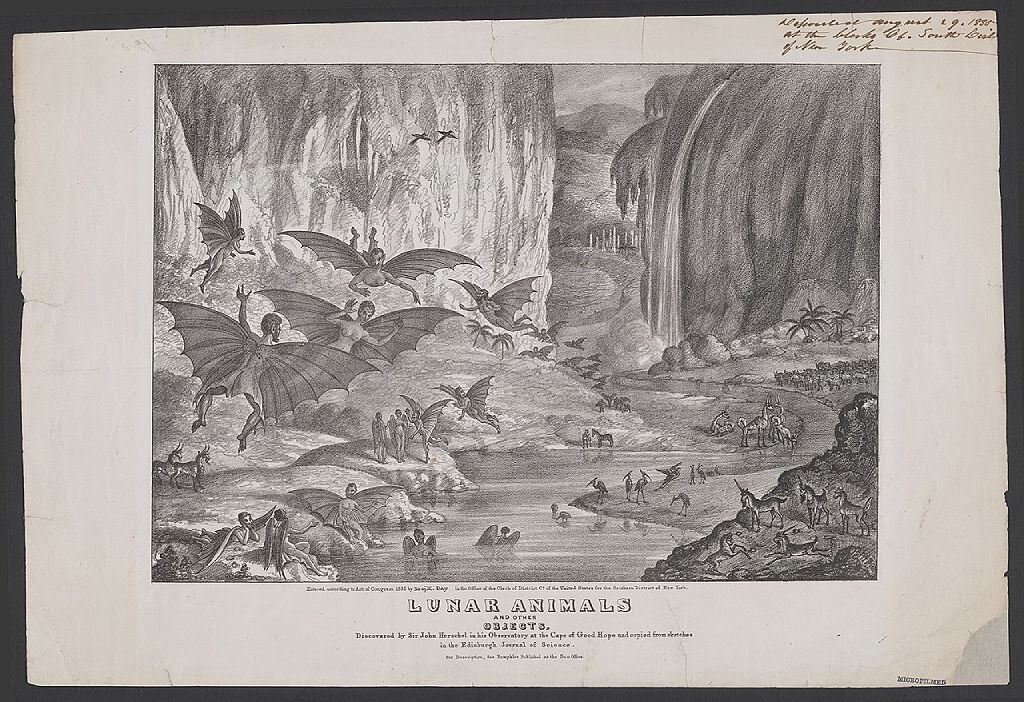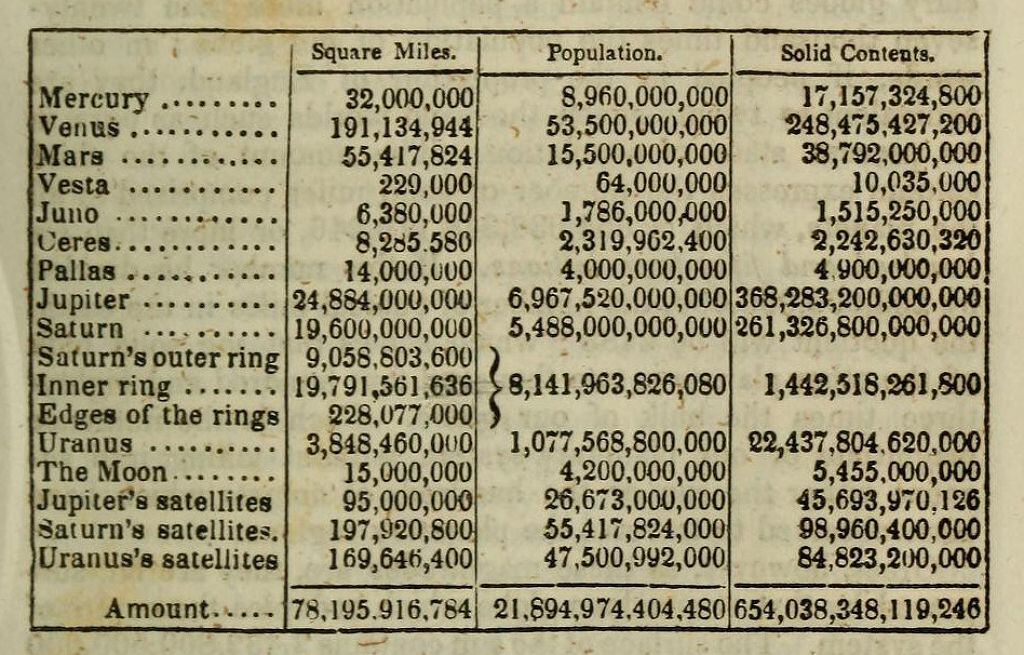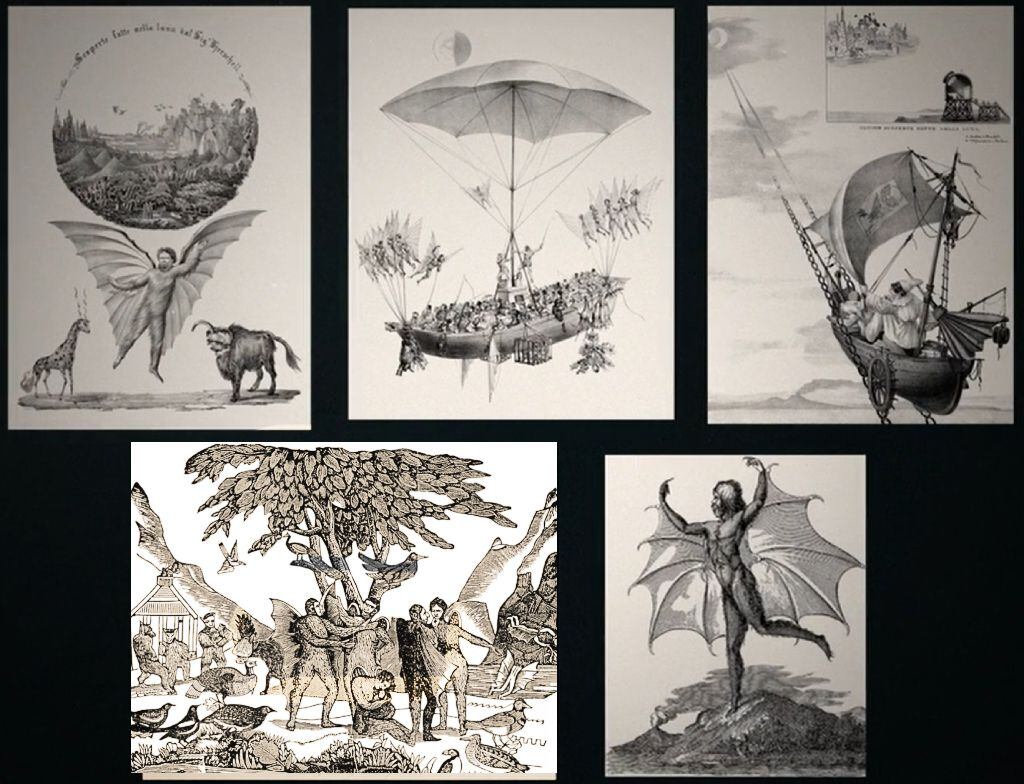In 1835, a story was launched like a rocket into space that left thousands looking up at the night sky and seeing a wonderfully eccentric lunar landscape.
It all started in Scotland, with an article entitled “Great Astronomical Discoveries”, published in the scientific journal Edinburgh Journal of Science.
Such discoveries had been made by the prominent astronomer Sir John Herschel, who had traveled in 1834 to the Cape of Good Hope, South Africa, to catalog the stars of the southern hemisphere.
According to the article written by Dr. Andrew Grant, Herschel’s fellow traveler and scribe, found much more than starsthrough a huge telescopic lens 24 feet in diameter and weighing 7 tons, 6 times larger than the largest existing.
For the first time, he had been able to glimpse a fantastic life on the Moon.
was the diary new york sun who drew attention to the news, publishing Grant’s article in a series of 6 installments.
He claimed that not only was there water on the Moon, but its rocks were covered with red flowers similar to terrestrial poppies.
In the shade of the trees of a forest, they saw herds of quadrupeds that looked like bison, and in a valley, goats with a blue horn, as well as “a strange spherical-shaped amphibian creature, rolling at great speed along the beach.” of stones”.
Particularly significant was the observation of some beavers walking on their hind legs, for represented an intelligent, albeit primitive, form of life.
“They carry their young in their arms like humans, and their huts are taller and better built than those of many human tribes,” the writing said.
Besides, from the smoke that was visible near those huts, it was clear that they knew how to use fire.
“The touch of grace was the discovery of the so-called bat men, whose Latin name was homo vespertilio“, Matthew Goodman, author of “The Sun and the Moon” told BBC Reel.
“Those 4-foot-tall creatures, they flew and talked, built temples and made art, and fornicated in public.”
That’s right: the fourth installment in the series spoke of winged human beings and, to dispel doubts, clarified that Herschel would publish a detailed report, along with certificates from civil, religious, and scientific authorities who had witnessed the findings on a visit to the observatory. .
The latest installment described the activities of a new group of homo vespertilio that they had found, “in every respect an improved variety of the species,” and concluded that there was “a universal state of harmony among all classes of lunar creatures”.
But the observations had to be suspended because the telescope had been left in a position where the Sun’s rays accumulated on the lens and set the observatory on fire.
By the time they fixed it, the Moon was not visible.
However, Grant assured, Herschel would report in the near future on an even more superior species of homo vespertilio that it was “infinitely more beautiful, and seemed to us scarcely less charming, than the representations of angels made by the most imaginative schools of painters.”

“The series caused a tremendous sensation. It was reprinted in rival newspapers and, by some estimates, 90% of people in New York City believed itGoodman said.
The story was a topic of conversation everywhere, even at universities like Yale.
The New York Times said the discoveries were “probable and possible”, while for the New Yorker the find heralded “a new era of astronomy and science in general.”
But it turns out…
Obviously, it wasn’t true.
Like the best lies, this one had touches of reality.
Herschel was indeed in South Africa observing the sky, although he did not have the £70,000 that King William IV had supposedly given him for his expedition.
In fact, he had had to finance it out of pocket.
He had, of course, a telescope, but not as huge or sophisticated as described.
His companion was not Dr. Andrew Grant, who was just as fictitious as the discoveries he reported in the imagined article published in the Edinburgh Journal of Science, a magazine that had closed two years ago.

It was a brilliant parody, an amalgamation of science fiction and irony that, to the surprise of its creatorconvinced thousands that the unbelievable was real.
Misunderstood
The intellectual author was the British Richard Adams Lockea descendant of the philosopher John Locke and a graduate of Cambridge University who had just arrived at the new york sun.
The journal had been founded two years earlier by Benjamin Day, at the dawn of the era known as “penny press“, cheaper newspapers aimed at “the common people”.
The new york sunhowever, it was not the most popular.
Day and Locke knew they needed a sensational story to pique readers’ curiosity, and if there was one thing that fascinated the public it was articles about scientific discoveries and voyages of exploration to remote places.
Fortunately, Locke had been reading about astronomy.

Many of “the astronomers at the time were religious,” Goodman explains.
“The general belief was that all heavenly bodies were populated because God would not have created these worlds without also creating intelligent beings there to appreciate them.“.
According to that natural theology, the observation of nature provided evidence of the existence of God and allowed a glimpse of his divine plan.
One of its most ardent supporters was the immensely popular Scottish astronomer Thomas Dick, who wrote highly successful books such as “The Christian Philosopher, or the Connection of Science with Religion.”
In it, he presented astronomy “in an intimate relationship with religion”, and described how the Sun “gradually ascends the vault of heaven”, the Moon “presents her round illuminated face”, and the mind is “elevated… to contemplation of an Invisible Power.”
He even calculated that the population of the Solar System was 21,891,974,404,480 inhabitants. 4,200,000,000 of them lived on the Moon.

Locke had a very low opinion of these rhapsodies..
“For him, religion had no place in scientific research,” Goodman said.
So, “he decided to write a series of articles satirizing the beliefs of those religious astronomers and said: ‘if you believe there are creatures on the Moon, I will give you moon bats; and if you believe there is water, I will give you seas, and I will cover everything in the kind of high-sounding, scientific rhetoric they use.'”
The idea was to expose how absurd those ideas were.
The problem is that he did it so well that it went wrong.
“What he didn’t anticipate – and this is the great irony of the Moon Hoax – was that people had been so educated in the ideas of these religious astronomers that when these articles came out they just believed they were true, because they were so close to what they were.” they’d already been reading,” Goodman says.
“Locke was very distressed but felt that he had no right to reveal the truth because the series belonged to the owner of the newspaper.“.
And, on top of that, “the series began to be published all over the world; there are 19th century editions with moon bats in various artistic styles.”

Before the report was revealed to be false, in the US, religious groups managed to raise money to take bibles to the moon, while in London, the philanthropic society organized meetings to “alleviate the needs of the people of the Moon and, above all, abolish slavery if it exists among its inhabitants”.
Epilogue
The astronomer Herschel was slow to find out about what happened, and when they showed him the articles they amused him.
His wife wrote that the lunar narrative was so well bolstered with “minute details” that “New Yorkers were not to blame for believing it” and that it was “too bad it wasn’t true”.
Thomas Dick, the main target of the parody, responded to Locke in his 1837 “Heavenly Stage” by saying that “all such attempts to deceive were violations of the laws of the Creator who is the ‘God of Truth.'”
To Locke’s comfort, there were those who understood his satire.
One of them was the French scientist François Arago who read the articles to the Academy of Science in Paris in a session constantly interrupted by “scandalous and uncontrollable laughter.”
Writer Edgar Allan Poe, who said he had immediately realized it was a joke, was very impressed with the “exquisite storytelling” and described Locke as “one of the few men of unquestionable genius”.
By the time the series ended, the New York Sun was the most widely read newspaper in the world, and although nothing was found to be true, its sales did not decline.
The newspaper never publicly acknowledged the lie.
A playful editorial published in 2010, 175 years after the Great HoaxHe said:
“One of the things that a long life as a journalist has taught us about corrections is that, as mandatory as they are when you know the truth, you don’t want to rush it.”
“For now, let us just say that we are aware of the claim that there are no were-bats on the Moon or here. Rest assured, we are looking into it. You can check this space again in 25 years“.
* Part of this article is based on “The ‘Great Moon Hoax’ that fooled the world” by BBC Reel, performed by Kirsty B Carter & Joe Harrison.
Source: Elcomercio
I, Ronald Payne, am a journalist and author who dedicated his life to telling the stories that need to be said. I have over 7 years of experience as a reporter and editor, covering everything from politics to business to crime.

:quality(75)/cloudfront-us-east-1.images.arcpublishing.com/elcomercio/GE3TCMRNGEYS2MJSKQYDAORRG4.jpg)

:quality(75)/cloudfront-us-east-1.images.arcpublishing.com/elcomercio/NCJO7B7ORBB6HHCZAUZ2NRYJ74.png)
:quality(75)/cloudfront-us-east-1.images.arcpublishing.com/elcomercio/FW3TCNBIQ5EOZNM754LWTLWE3U.jpg)
:quality(75)/cloudfront-us-east-1.images.arcpublishing.com/elcomercio/HKXGLTPNHRA6DAMD2XU55ZZLRY.jpg)
:quality(75)/cloudfront-us-east-1.images.arcpublishing.com/elcomercio/PQZPCTRMCBDDDMVL6UZSUIRZGU.jpg)
